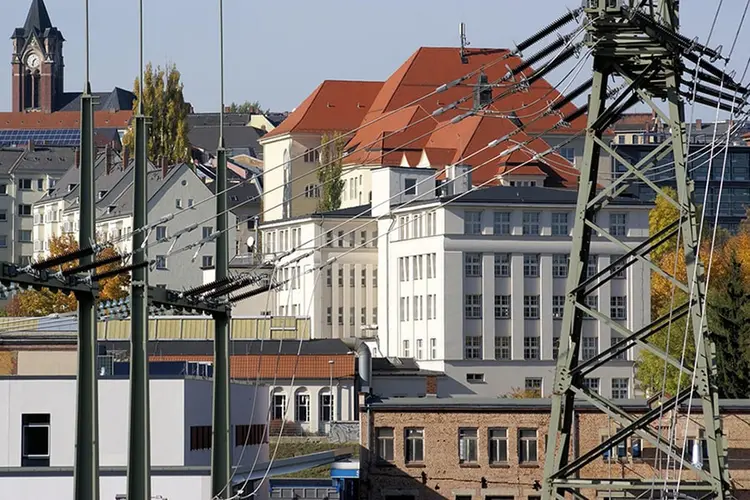
A Natural Gas Bridge to Net Zero?
Media Inquiries
Destenie Nock(opens in new window), an assistant professor of civil and environmental engineering(opens in new window) and engineering and public policy(opens in new window) in Carnegie Mellon University's College of Engineering(opens in new window), has co-authored a study that helps illuminate the future of natural gas-fired power on the road to mitigating greenhouse gas (GHG) emissions. Taking a novel international perspective, the team performed a life cycle analysis for each of the 108 countries with gas-fired power in 2017, estimating the total life cycle emissions for each. The work, published in Nature Climate Change(opens in new window), provides unprecedented information and insight into opportunities for GHG mitigation through both national and international efforts.
As researchers, policymakers and industry leaders plot the course toward net-zero GHG emissions, an increasing number have looked to natural gas as a crucial bridge for the present. As energy systems work toward a majority share of low-carbon energy sources, other efforts have sought a more immediate transition toward natural gas and away from emissions-intensive (relative to natural gas) fossil fuels, particularly coal. Nock and the team faced many considerations when analyzing the full life cycle emissions and potential future impacts of heavy investment in natural gas-fired power as a bridge fuel to net-zero; these included transmission and distribution losses, methane leaks and a changing energy system.
Emissions related to natural gas-fired power are generated long before the fuel reaches the power plant. In addition to the extensive GHG emissions generated in transporting it globally, natural gas also generates methane at every step throughout its journey from extraction to its harnessing and delivery as electricity. Methane is a significantly more potent GHG than carbon dioxide, which has increasingly raised questions about the efficacy of natural gas in helping to cut emissions in the long term. The authors also note the risk of overinvestment in fossil fuels and the potential for unintentionally locking in fossil fuels beyond their usefulness in reducing emissions. These calculations are made complicated by transmission and distribution losses in the electricity sector, which require more energy to be produced than is consumed. Nock provided equations and analysis for the transmission and distribution losses in this analysis.
Nock and her colleagues determined that the global average of life cycle GHG emissions from the delivery of gas-fired electricity represents 10% of global energy-related emissions, mostly resulting from power generation, followed by methane generated cumulatively through the process of natural gas-fired power generation. They note, however, that only 19%-26% of emissions could be prevented with measures to reduce emissions from methane emissions and to address inefficiencies in transmission and delivery infrastructure. The researchers conclude that significant deployment of carbon capture and storage (CCS) technologies must be part of any viable means for utilizing natural gas to serve as part of a transition toward lower carbon emissions. In comparison to the other options surveyed, CCS could provide an additional 45%-52% reduction in lifetime emissions from natural gas-fired power generation. Together these advances could represent a 70% or more decrease in GHG emissions from natural gas-fired power generation.
The team note the unique opportunities offered through analyses like their own, identifying drivers of emissions in the gas supply chain within the national and international scope. This data can help policymakers identify the best tools available for reducing GHG emissions in their region. They also emphasize the importance of international efforts at curbing emissions, and in particular, highlighting the role many international actors play at different steps in the gas supply chain — and the role these actors can also play in leveraging these interactions to support decarbonization globally. With increasing efforts and agreement at both the national and international level toward cooperative decarbonization, the analysis and recommendations, according to its authors, represent "the first global study that demarcates the emissions challenges and mitigation opportunities associated with using gas as a transitional source for electricity generation."


